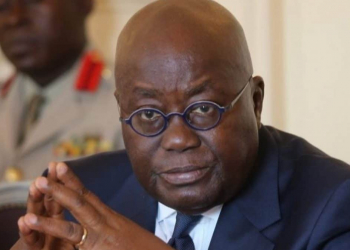Rating agency, Moody’s has reviewed Ghana’s issuer outlook from negative to stable, maintaining the rating at B3.
The key drivers for the review, according to the rating agency, is the country’s significant fiscal deficit reduction and institutional reform implementation over the past year under the umbrella of the 3-year IMF programme starting April 2015.
According to the rating agency, a stable outlook is due to the significant reduction in the fiscal deficit achieved under the umbrella of the 3-year Extended Credit Facility (ECF) programme since inception in April 2015, with a deficit reduction to 6.3% of GDP in 2015 from 10.2% in 2014.
The improvement was underpinned by both improved revenue collection and expenditure control, in particular with respect to wages and salaries, and included the repayment of arrears in the amount of 2.4% of GDP, Moody’s said in a statement last week.
“Budget execution data over the first five months of 2016 point to a tax and oil-related revenue shortfall exacerbated by temporary production interruptions at the Jubilee oil field, but which was mostly offset by capital expenditure cuts with no salary or goods expenditures overruns,” says Moody’s.
The government has affirmed avoidance of recourse to central bank funding this year, in line with ECF conditionality, while parliament lowered the legal borrowing limit to 5% of previous year’s revenues from 10%.
Moody’s says it anticipates a budget deficit of 6.1% of GDP this year, declining further to 5.3% in 2017.
Moody’s lauded additional legislation recently adopted includes the Banks and Specialized Deposit-Taking Institutions Bill, the Deposit Insurance Bill, and the Public Finance Management Law aimed at improving spending control across all levels of government and including state-owned enterprises.
“The government has also devised a strategy to address outstanding legacy debts in the power utility sector, funded by energy levies introduced in January 2016.”
These legacy debts owed by state-owned utilities do not represent direct or explicitly guaranteed debt of the government, according to Moody’s.
“These initiatives underscore the government’s commitment to the IMF programme, with reduced likelihood of renewed election-related expenditure overruns this year or in case of a change in administration after presidential and parliamentary elections scheduled for December 7, 2016.”
The second driver of the assignment of a stable outlook is the improved government liquidity risk profile after the recent issuance of the $750 million 6-year Eurobond at 9.25% earmarked for the redemption of the remaining $400 million outstanding of the 8.5% October 2017 maturity.
After that, the next international bond principal payment of $250 million is scheduled for 2020, indicating lower near-term external liquidity pressures. That said, gross borrowing requirements remain elevated in 2017 at about 18% of GDP amid tight domestic and external funding conditions.
The government’s strategy to extend the maturity profile of outstanding domestic securities from currently about one year in order to reduce rollover risks in this segment benefits from the increased participation of nonresident investors observed over the first five months of this year, supported by the relative stability of the domestic currency against the US dollar over the past year.
Moody’s expects gradually lower inflation readings to allow for a reduction in domestic borrowing costs over the forecast horizon, thereby improving debt affordability measures such as interest/revenue currently at almost 30% as of May 2016.
The third driver for a stable outlook stems from an improved balance of payments dynamics recorded in the first half of 2016.
Moody’s expects the $750 million Eurobond proceeds in addition to the Cocobod loan in the amount of $1.8 billion to provide an increased foreign exchange buffer to better withstand external shocks such as renewed deterioration in the terms of trade or increased international capital market volatility following the anticipated tightening of US monetary policy.
Moody’s expects that Ghana’s fiscal and external accounts will also benefit from FDI inflows and the ramp-up in oil exports from the Tweneboa-Enyenra-Ntomme (TEN) oil field starting August 2016 towards 80,000 bpd at full capacity, and from the new Sankofa field with 30,000bpd starting production in the second quarter of 2017 before first gas expected in the second quarter of 2018. The development of this field benefits from a $700 million project guarantee from the World Bank.
Sign up for Ghana Star News to receive daily email alerts of breaking news in Ghana. GhanaStar.com is your source for all Ghana News. Get the latest Ghana news, breaking news, sports, politics, entertainment and more about Ghana, Africa and beyond.


